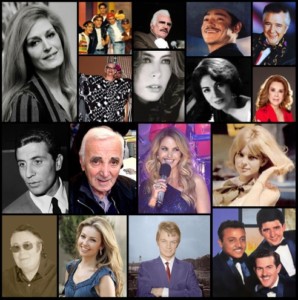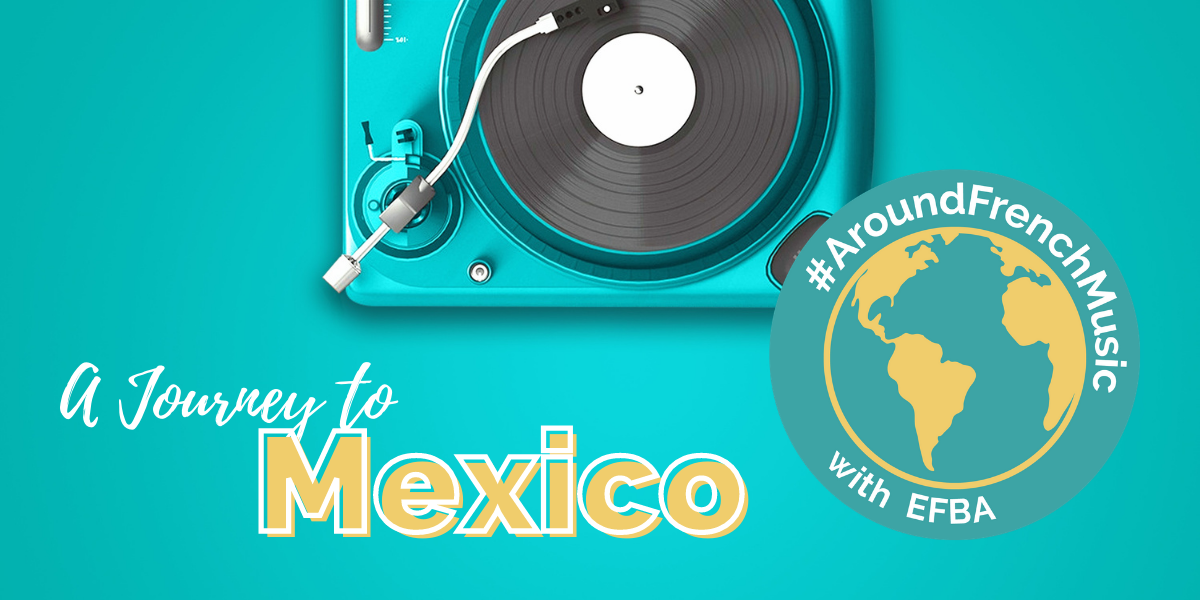For our next stop in Around French Music, we are visiting our neighbors in Mexico.
Mexicans first began to immigrate to California in significant numbers during the Gold Rush. While migration from Mexico leveled off for the remainder of the 19th century, it increased dramatically throughout the 20th century. As the highest population of immigrants in the Bay Area (home of EFBA), Mexicans have played a large role in influencing and building the California economy and culture.
According to a 2019 survey by the International Federation of the Phonographic Industry (IFPI), Mexican people spend more time (25.6 hours per week) listening to music compared to the average person (18 hours per week). At the beginning of the 19th century, music was used as an expression of Mexican nationalism. More recently, music has had a broader impact in general education, where a 2011 training proposal by the Secretariat of Public Education addressed the cognitive, motor, and emotional benefits that students could gain from adequate musical training.
However, what is the musical connection between the French language and Mexico’s Spanish?

Palacio de Bellas Artes, a prominent cultural center in Mexico City
The name of music genre Mariachi was thought to come from the French word mariage, dating back to the French intervention in Mexico in the 1860s. While documents later proved otherwise, France did have a strong influence on art and culture around the world, including in Mexico, beginning in the 18th century. President Porfirio Díaz (1876-1880, 1884-1911) even modeled the center of Mexico City after Paris.
Over the years, several initiatives have reinforced the presence of French music in Mexico. The French Embassy in Mexico promotes programs with the Festival Internacional Cervantino, the Ensemble 2e2m (for contemporary music), and IRCAM (Institut de Recherche et Coordination Acoustique/Musique). Created in 1982 by the French Minister of Culture Jack Lang, Music Day (or Fête de la Musique) has been an important event in Mexico since 2003, bringing together a variety of music styles in public concerts including French artists.
“El reloj,” a Bolero song written by composer Roberto Cantoral and recorded by the group Los Tres Caballeros (1957) and later Luis Miguel (1997), became “Pardon” by the Egyptian-Italian-French singer Dalida (1958) in its French version. In “Justo en el momento,” pop singer Sasha Sokol, adds a techno-electro touch to rock song “Il jouait du piano debout” by France Gall.
The international French hit “Voyage, voyage” by Desireless became “Vuela Vuela” by boy band Magneto. For her rendition of Edith Piaf’s “La vie en rose,” Thalía, a singer and actress famous for her telenovelas, included Latin pop elements in “La Vida en Rosa.”
“Et maintenant,” interpreted by Gilbert Bécaud, in its Spanish version is called “Por qué me dejas” by Javier Solis. “Comme d’habitude” composed and interpreted by Claude François, became “A mi manera” in the voice of Vicente Fernández. The romantic singer Luis Miguel recorded “De Quererte Así,” a Mexican version of the timeless “De t’avoir aimée” by Charles Aznavour.
The songwriter Lucero popularized “Emporte-moi” by Alain Barriere in Mexico with her version, “Y Volvere.” Finally, “Bésame Mucho” by Consuelo Velázquez, one of the most popular songs of the 20th century, was adapted by Mexican icon Guadalupe Pineda, who sings it beautifully in French as “Embrasse-moi.”

Roberto Cantoral, Los Tres Caballeros, Luis Miguel, Dalida, Sasha Sokol, France Gall, Desireless, Magneto, Thalía, Gilbert Bécaud, Javier Solis, Claude François, Vicente Fernández, Charles Aznavour, Lucero, Alain Barriere, Consuelo Velázquez, Guadalupe Pineda.
Do you have any other recommendations? Share your suggestions in the comments! For a full list of songs, check out our Youtube playlist here.

